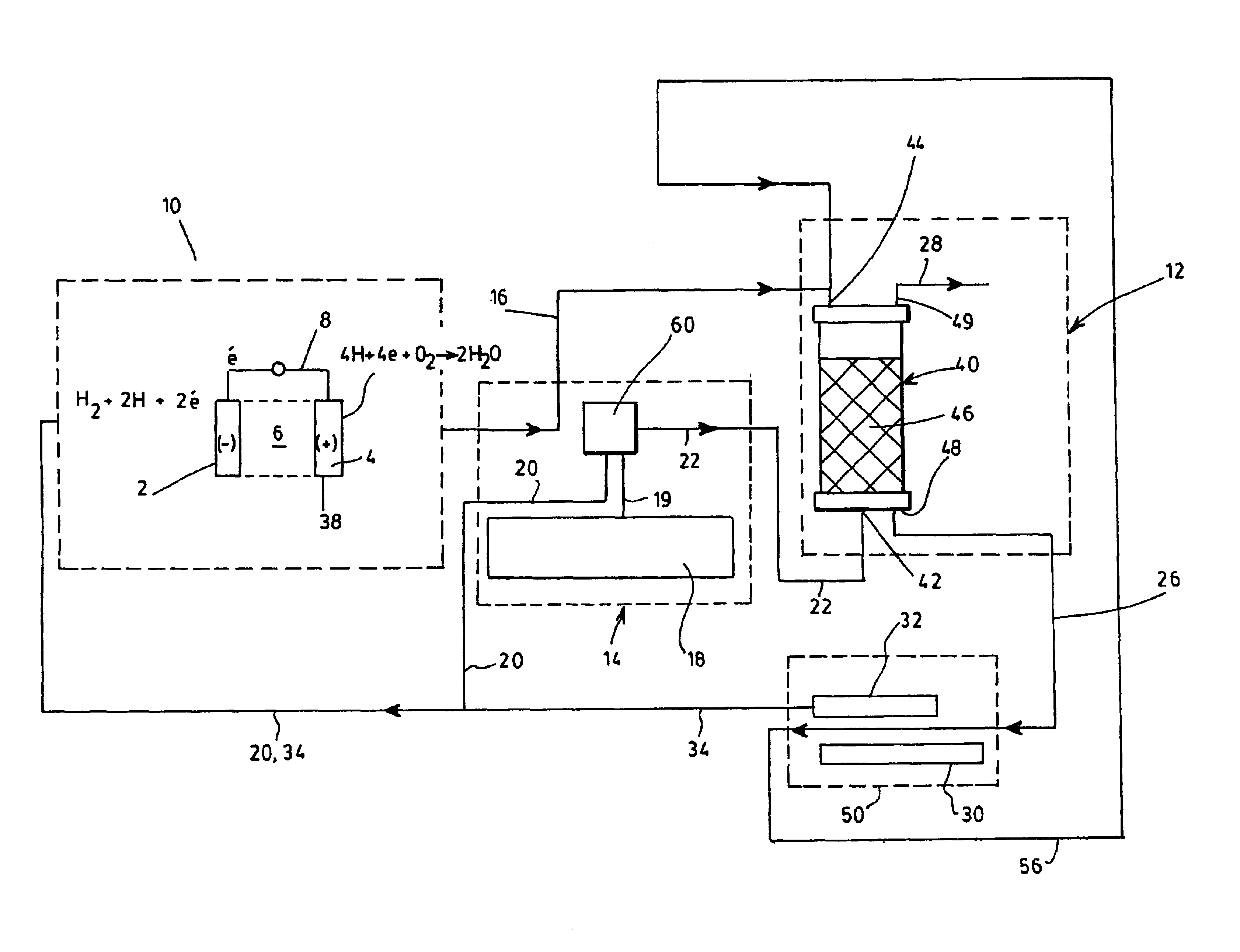Process for generating electricity with a hydrogen fuel cell
a hydrogen fuel cell and hydrogen fuel technology, applied in the direction of fuel cells, electrochemical generators, electrical equipment, etc., can solve the problems of low efficiency, high cost of storing methods, and rare and readily available molecularly free gas, and achieve the effect of increasing the efficiency of hydrogen fuel cells, simple and non-polluting
- Summary
- Abstract
- Description
- Claims
- Application Information
AI Technical Summary
Benefits of technology
Problems solved by technology
Method used
Image
Examples
example 1
Methane reforming is used as a primary energy source for a hydrogen fuel cell. During methane reforming according to equations (I) and (II), one mole of methane generates four moles of hydrogen and one mole of CO2.
During the enzymatic process, according to equation (V), one mole of hydrogen ions (or one half mole of hydrogen) is produced for each mole of dissolved CO2 that is removed.
Calculations are as follows:1 kmole CO2=44 kg CO2 1 kmole H=½ kmole H2=1 kg H2 1 kg H2 / 44 kg CO2=0.0227 kg H2 produced / kg CO2 or 22.7 kg H2 produced / ton CO2
This hydrogen is used in a hydrogen fuel cell in order to produce electricity. The maximal theoretical energy produced by liquid hydrogen, assuming complete oxidizing, is 33 kWh per Kg of H2. The hydrogen fuel cell process reaches an overall efficiency of 85% when thermal recovery is present which translates to the following:33 kWh / kg H2×85%=28.05 kWh / kg H2
For every ton of CO2 removed,22.7 kg / ton CO2×28.05 kWh / ton CO2
The production of one kilowatt...
PUM
| Property | Measurement | Unit |
|---|---|---|
| pressure | aaaaa | aaaaa |
| pH | aaaaa | aaaaa |
| electrical | aaaaa | aaaaa |
Abstract
Description
Claims
Application Information
 Login to View More
Login to View More - R&D
- Intellectual Property
- Life Sciences
- Materials
- Tech Scout
- Unparalleled Data Quality
- Higher Quality Content
- 60% Fewer Hallucinations
Browse by: Latest US Patents, China's latest patents, Technical Efficacy Thesaurus, Application Domain, Technology Topic, Popular Technical Reports.
© 2025 PatSnap. All rights reserved.Legal|Privacy policy|Modern Slavery Act Transparency Statement|Sitemap|About US| Contact US: help@patsnap.com



